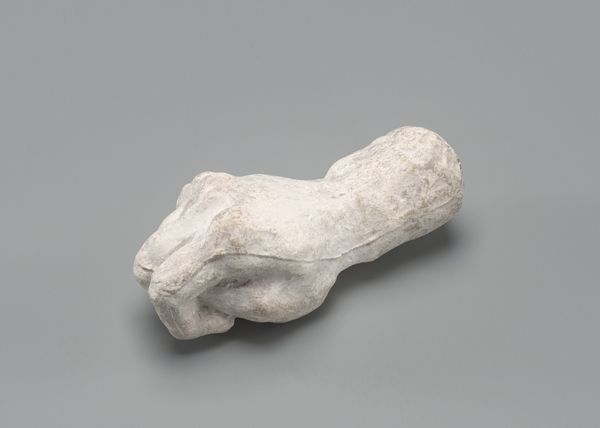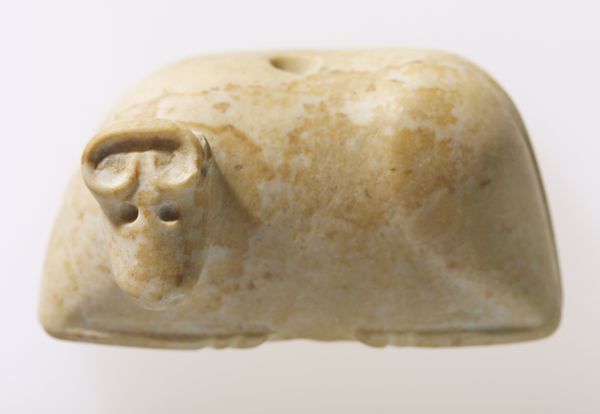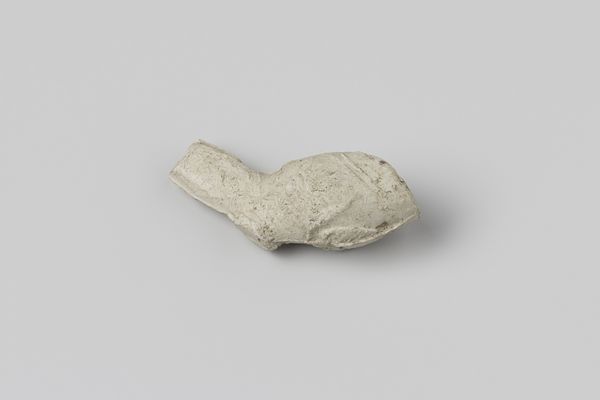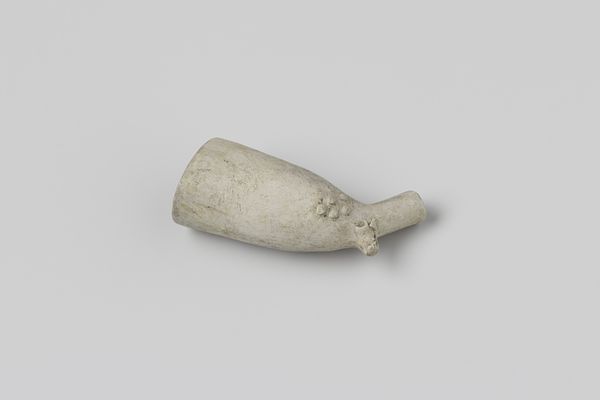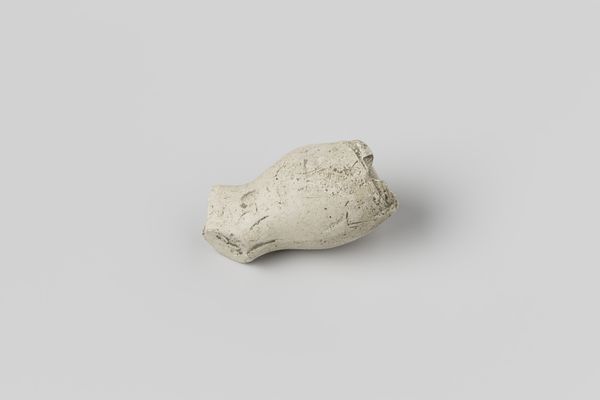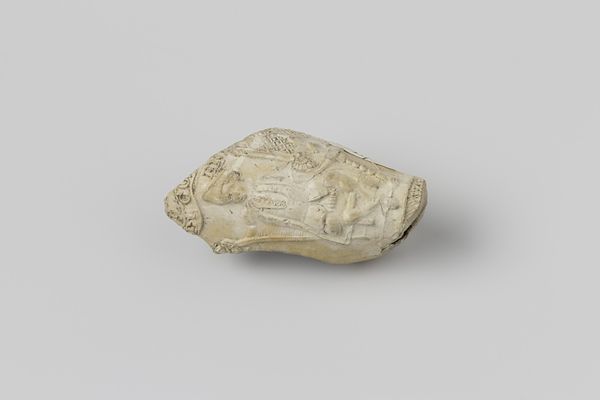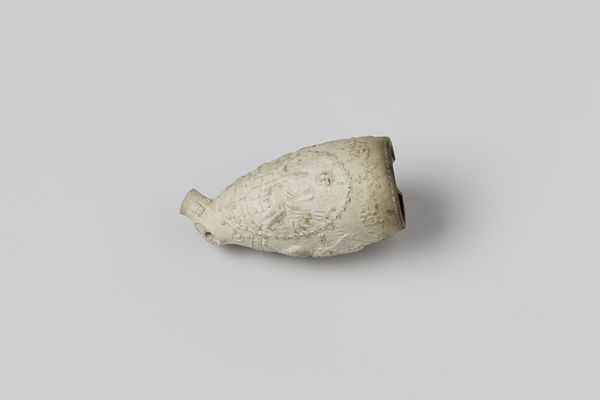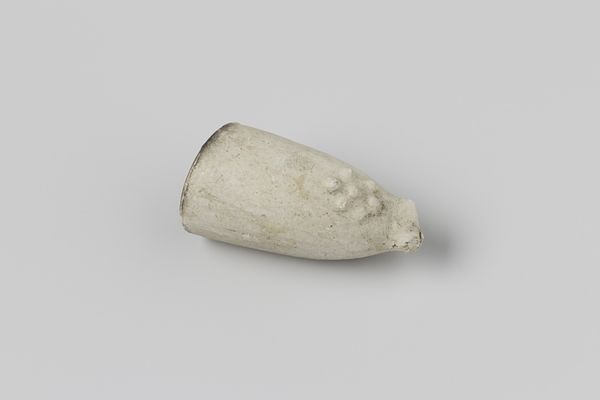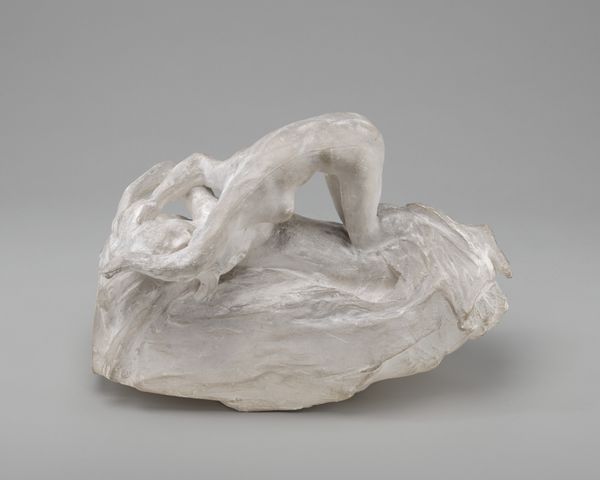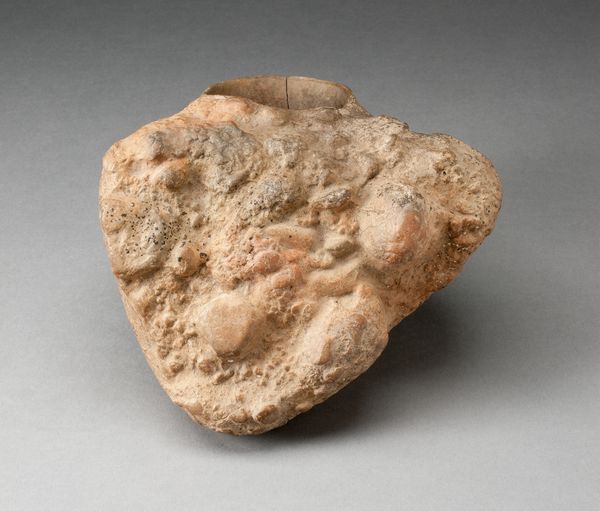
ceramic, sculpture
#
sculpture
#
ceramic
#
sculpture
#
ceramic
Dimensions: 2 1/4 x 6 15/16 x 9 11/16 in. (5.72 x 17.62 x 24.61 cm)
Copyright: Public Domain
Curator: Well, well, doesn't our shelled friend look contemplative! What's your take on this 19th-century ceramic sculpture, simply titled "Turtle?" Editor: It feels very grounded. The material—ceramic—and the subject, a turtle, both speak to the earth and a sense of stillness, a kind of humble presence. But it looks almost unfinished; is that deliberate? Curator: Maybe! There's a quiet power in raw materiality. Considering ceramic's inherent link to the earth and the laborious process involved, one begins to question whether we undervalue so-called craft traditions versus the conceptual weight attached to sculpture. It's anonymous, so the creator seems to fade into process. Editor: It's beautiful to consider that fading. I keep coming back to this image of the sculptor. I imagine them kneading the clay, slowly forming the shape, thinking about what it means to represent this creature. Did they observe a turtle in life, what textures did they try to translate? It almost asks you to feel the wet earth on your hands again. Curator: That tactility definitely makes you question the value society places on ‘high’ art versus skilled making. Maybe that’s because functional ceramics also serve the purpose to provide a sense of community while sculptures of stone or bronze were meant for memorial. Editor: You can really feel that communal intention and shared material access here; not a showy, singular monument. A quieter statement. Curator: Definitely. And I think there’s something beautiful in how this little ceramic creature allows us to contemplate the grand timescale of natural history and craftsmanship on the human timescale. Editor: So true. It really gets under your skin, doesn't it? Pondering our own slow crawl toward…well, something! Curator: Yes, definitely something profound! Thank you for joining me in that crawl.
